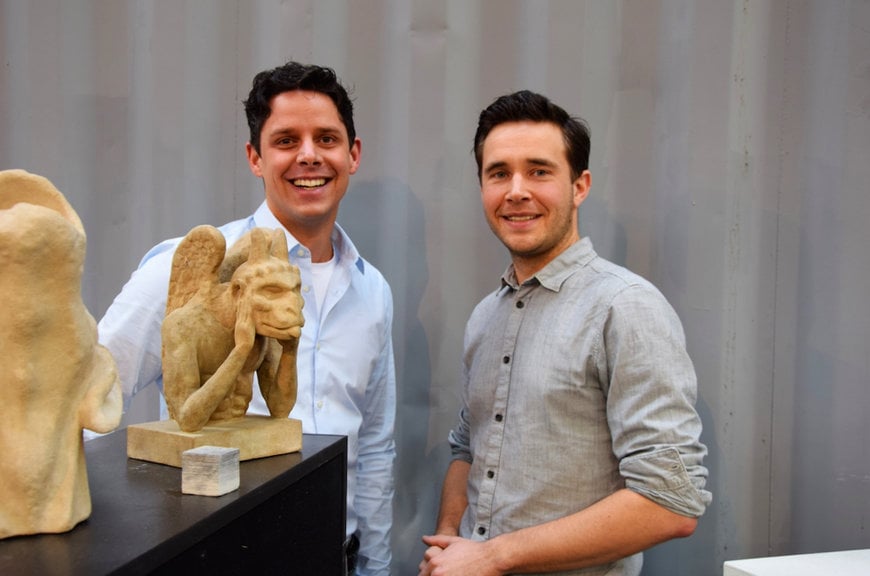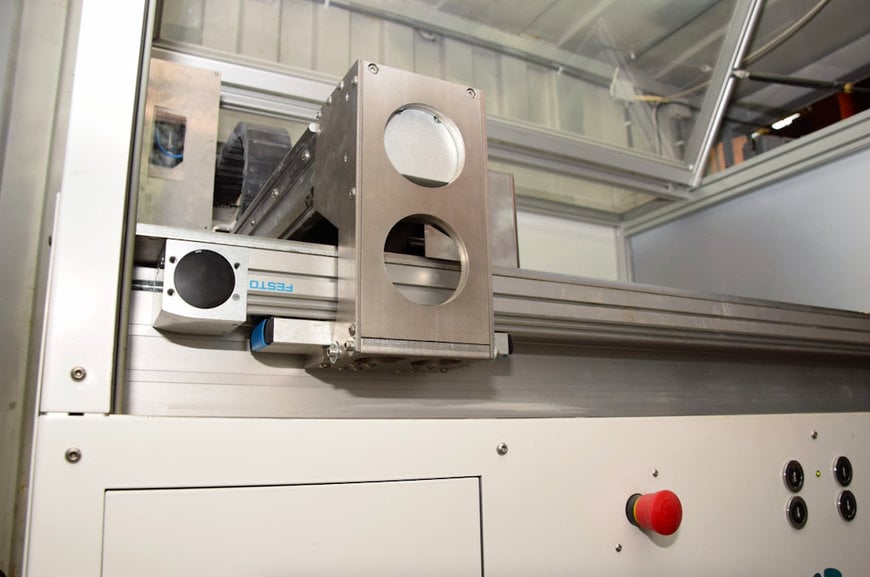www.magazine-industry-usa.com
17
'23
Written on Modified on
Festo automation technology aids restoration of Notre-Dame Cathedral
Rapid leaps in innovation characterise the development of additive manufacturing processes. Rotterdam-based company Concr3de has been working on a 3D printer for stone for more than five years, developing an inkjet technique to participate in the reconstruction of Notre-Dame Cathedral in Paris.

Architectural applications were the catalyst for the development of Armadillo White, the inkjet 3D stone printer. The founders of Concr3de, architects Eric Geboers and Matteo Baldessari, started with a geopolymer - a material made by binding a residual product from the coal and steel industry with a chemical binder (“ink”). They proposed using the burnt remains of the Paris cathedral as raw material to repair the damaged masonry, because the lack of craftsmen and original raw materials made it difficult to reconstruct the destroyed parts using medieval techniques.
In order to develop their 3D printer, Concr3de needed components that would function reliably for a long time under difficult conditions and be easily scalable. The supplier's knowledge of software technology and service were also important to them.
Automation solutions
They identified Festo as a possible partner through similar 3D printing projects and asked Jeroen te Brake, additive manufacturing specialist at Festo Netherlands, for support. He used Festo’s EXCM product demo box to test that the printer principle worked and to identify an appropriate linear drive for the handling system to drive the movements of the print head.

The Festo ELGA actuator can have a positive pressure applied internally to prevent the ingress of dust: a critical factor in 3D stone printing.
The Festo ELGA actuator was chosen for three reasons: it can have a positive pressure applied internally to prevent the ingress of dust, it can be supplied in long lengths, and it has a good protective cover. Festo also mounted the actuator upside down so that no dust could fall into it. In addition to the ELGA axis, the control system, the Z-axis components, and the fluid supply for the binder and piping also came from the Festo range.
Using data from Concr3de, Festo meticulously calculated the axes, gearbox, motor and control to obtain the correct inertia ratio. Integrating a Siemens controller was also easy. All Concr3de then had to do was drag the appropriate function blocks for the communication lines from Festo's standard software libraries into the right place. Thanks to Festo's configuration tool, only the positions to be moved had to be entered and a plan of each movement could be created. Festo provided engineering support and training to Concr3de throughout.
Rising from the ashes
The collaboration between Concr3de and Festo has been successful. Printing with the ashes of the building is not only much faster, but also gives the building a history. The necessary scans for the 3D reconstruction are available because American scientist Andrew Tallon fully 3D mapped the building in 2013. Concr3de used one of his scans to reconstruct a sculpture from Notre-Dame, a striga, which is a bird-like demon.
The company printed a 30cm high model of the stone carving, using limestone powder and a binder, in five hours. Tests at the Delft University of Technology have shown that the result is in no way inferior to real limestone.
For more information about Festo products and services, visit: www.festo.com/gb
www.festo.com

